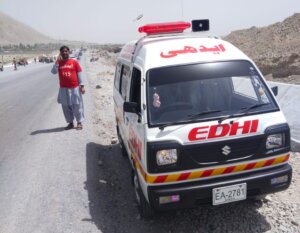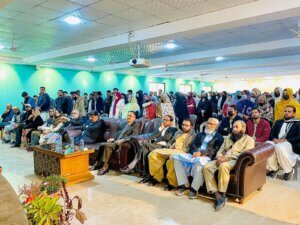Ghulam Ali Baloch:
In the landscape of Balochistan’s higher education, several challenges have emerged, casting shadows over the educational prospects of its youth. These challenges, if not addressed promptly, could impede the region’s progress and development. Here’s an exploration of some pressing issues and potential avenues for reform:
1. Imbalance in Staffing Ratios: Investigations into the staffing trends following the 18th amendment reveal a concerning ratio of non-teaching staff to faculty members. The purported ratio of 8 non-teaching staff for every teaching faculty member is highly undesirable and warrants immediate attention.
2. Disbalance in Budget Allocation: The proliferation of new departments and the consequential construction of buildings have led to a disbalance in budget allocations within the higher education sector. Funds earmarked for teaching and infrastructure development are not proportionately allocated, leading to inefficiencies.
3. Lack of Corporate Social Responsibility (CSR) Funds: Contrary to global best practices, there is a notable absence of Corporate Social Responsibility (CSR) fund management for sponsoring higher education initiatives in Balochistan. Major investors and entities have made negligible contributions towards the advancement of higher education, posing a significant hurdle to educational progress.
4. Inadequate Resource Management Skills: Despite possessing substantial business potential, university management in Balochistan lacks the necessary skills to generate and manage resources effectively. Instances such as the University of Multan’s successful utilization of agricultural lands underscore the untapped potential for revenue generation within Balochistan’s universities.
5. Absence of Internal Consultation: A lack of internal consultation exacerbates the mismanagement of resources, resulting in irrational appointments and the illogical establishment of new campuses and departments. Internal dialogue and collaboration are essential for optimizing resource allocation and decision-making processes.
6. Irrational Construction Projects: The Higher Education department’s inclination towards constructing large buildings for Research Centers (BRCs) and Cadet Colleges at exorbitant costs further strains the funds allocated for higher education. These expenditures compete with essential university funding, hindering the sector’s overall progress.
7. Need for Institutional Re-alignment: Several institutions under the Higher Education umbrella require re-alignment to improve the quality of both school and college education. Outdated practices, such as the establishment of Intermediate Colleges, need to be re-evaluated in favor of modern educational structures that align with contemporary needs.
8. Modernization of Curriculum and Institutions: Many colleges struggle to adapt to the new curriculum introduced under the BS program, leading to redundancy and inefficiency. Transforming these colleges into centers for skill development or upgrading them to universities could better serve the educational needs of Balochistan’s youth.
In conclusion, Balochistan’s higher education sector faces multifaceted challenges that demand immediate attention and reform. By addressing staffing imbalances, reallocating budgets effectively, fostering corporate partnerships, enhancing resource management skills, promoting internal collaboration, rationalizing construction projects, realigning institutions, and modernizing curriculum and institutions, Balochistan can pave the way for a brighter educational future for its youth
The author is a senior bureaucrat in the government of Balochistan






